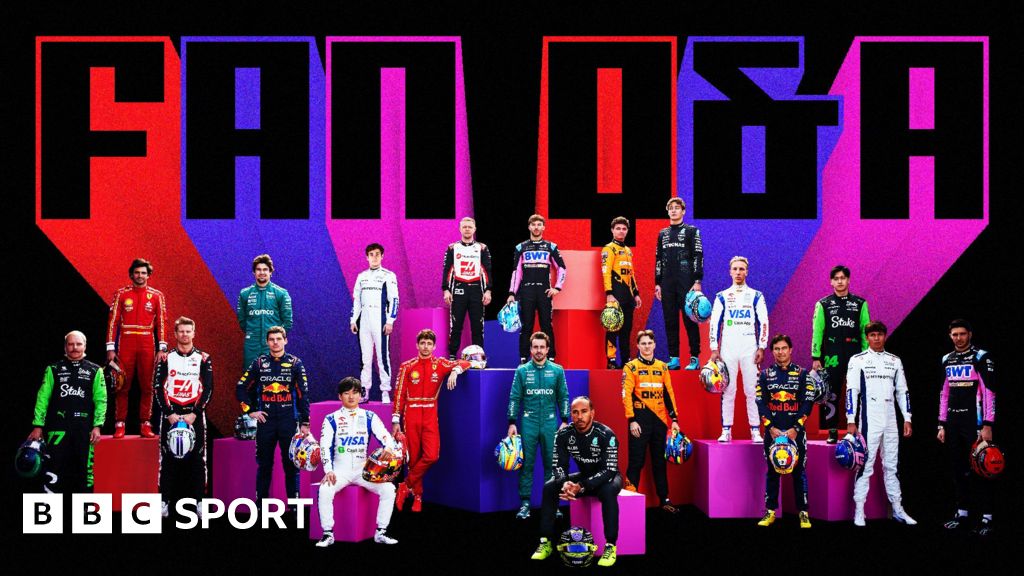F1 Q&A: Lando Norris and Max Verstappen US Grand Prix battle, Lewis Hamilton and Ferrari

If Lando Norris got a penalty for gaining an unfair advantage and passing Max Verstappen, why didn’t Max get one for forcing another driver off the track? – Rob
This question goes to the heart of the debate over the rights and wrongs of the defining incident of the United States Grand Prix.
Lando Norris attempted to pass Max Verstappen around the outside of Turn 12. Both cars ended up running off the track. Norris got ahead and stayed there for the rest of the race. He was penalised five seconds for gaining an advantage by going off track, demoting him back behind Verstappen.
There are so many elements to this. The first is that, yes, Norris, in factual terms, undoubtedly gained an advantage after going off the track. This is the position of Red Bull and Verstappen, who felt it was a “slam-dunk” penalty.
Norris and McLaren’s view is that he went off the track only because he was forced there by Verstappen.
This argument is that Verstappen, whether deliberately or not, ran right to the edge of the track on the exit of the corner, leaving Norris on his outside no option but to do the same. Norris could not turn more because if he did they would have crashed.
Verstappen definitely did do this. The question is whether he was entitled to. The stewards decided he was, because Norris was “not level with” Verstappen at the apex and therefore had “lost the right” to the corner.
This assessment comes from the drivers’ overtaking guidelines, which is not a publicly available document. It states the driver on the outside in this sort of situation must “have the front axle at least alongside the front axle of the other car at the apex of the corner and to the exit” to be entitled to be afforded room.
McLaren’s argument is this was an example of a standard operating procedure of Verstappen – throw his car up the inside and force the other driver wide – when he is defending, which is essentially unfair.
McLaren team principal Andrea Stella said: “The defending car goes just straight at the apex. We checked the video multiple times. It is just going straight. It is just going off the track as much as Lando is doing, just giving no chance for Lando to complete the manoeuvre.
“If I was a journalist, I would have done a bit of statistics how many times Max has used this way for defending.”
What McLaren are essentially saying is Verstappen is ‘gaming’ the rules – driving to the letter, but in a manner many would consider not fair racing. It could be argued this is a flaw in the drivers’ racing guidelines.
Another time Verstappen did this was Brazil 2021 against Lewis Hamilton. That was at much higher speed, so the danger was greater, but in that case most of the drivers felt Verstappen should have had a penalty after both drivers went off the track. He did not get one.
The other issue here is Verstappen was ahead at the apex, slightly, only because he had braked later than Norris, despite being on the dustier inside line where there would be less grip. Norris had previously nosed slightly ahead on the straight approaching the corner.
And the question that arises from that is whether Verstappen drove as the guidelines demand, in a “safe and controlled manner at all times”, “forced the other driver off track” and was as a consequence “able to make the corner within track limits”.
McLaren would contend that he did not comply with these requirements. But this was ultimately not considered relevant by the stewards.
Similar questions arise from the incident at the first corner, where again Verstappen was on the inside and both ended up off track on the exit.
Red Bull team principal Christian Horner said this would have been considered differently because on the first lap, and especially the start, more leeway is given and the fundamental default is “let them race”.
However, it is easy to see why some have questioned the lack of consistency between the two incidents – and indeed with that at Las Vegas in 2023, when Verstappen was penalised for forcing another driver off the track at the first corner, in that case Ferrari’s Charles Leclerc.
Driving in this way does make Verstappen very hard to overtake, especially on the outside.
How does a rival do it in a manoeuvre where the cars are more or less side by side, one might wonder, if he is highly likely to brake so late he will always be ahead at the apex, to ensure he complies with that requirement, and then force them wide?
It is expected the drivers will discuss some of these issues in their briefing at the Mexican Grand Prix this weekend.
World News || Latest News || U.S. News
Source link



